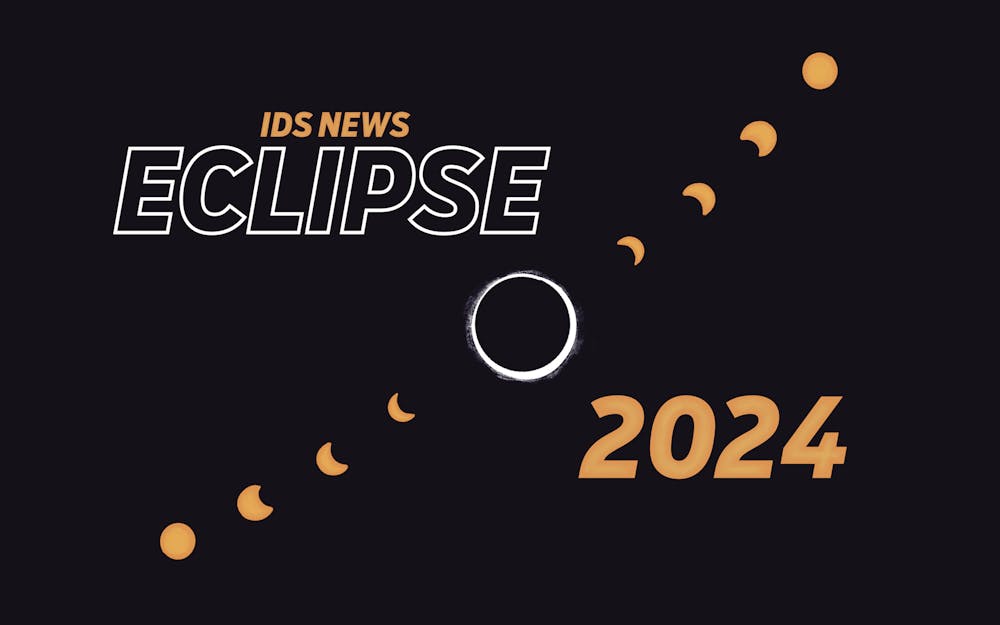Bloomington will experience a total solar eclipse April 8, 2024 starting approximately at 3:04 p.m and lasting for four minutes. But what is an eclipse?
A solar eclipse occurs when the orbital path of the moon aligns between the Sun and the Earth. Because the moon is about 400 times smaller than the sun but also about 400 times closer, the size of each celestial object roughly lines up.
Henry P. Scott, a professor and chair of Physics and Astronomy at Indiana University South Bend, said the moon cycle is an important factor in eclipses. Solar eclipses can only appear during new moons. However, they don't happen every new moon, due to the inclined orbital plane of the earth and moon making perfect line-ups rare.
“The reason for that is the shadow is being cast, but it misses Earth entirely,” Scott said. “It just totally misses it because they’re not all in the same orbital plane. The orbit of the moon is slightly inclined relative to the orbit Earth takes around the sun.”
Scott said a convenient experiment is putting one’s hand partially in front of a light bulb.
Scott said the umbral shadow, which is the part of the hand that fully blocks the light, simulates a total solar eclipse. The ring of light around the hand is called the penumbral shadow, which during the eclipse is seen as the light of the Sun escaping the shadow of the moon.
“It’s pretty incredible how we’ve understood planetary motion, and the mathematics aren’t especially difficult,” Scott said. "We know very well the orbital parameters of the moon and Earth. We can calculate far into the future and know where the objects will be.”
Scott said there will be notable changes in the surroundings of eclipse-viewers.
“If you’re close to the path and the sunlight is blocked out, you will typically notice the temperature dropping,” Scott said. “The animals notice this is occurring, and it’s getting darker, so some animals will start to do what they do in the nighttime.”
According to a CNN article, an eclipse affects more than just temperature. Less solar radiation and reduced temperatures can also decrease wind speed.
Scott said while solar eclipses aren’t considered rare, scientists do consider being in the totality of a solar eclipse to be rare. According to NASA, after the solar eclipse April 8, the next total solar eclipse in the United States will be visible in Montana, North Dakota and South Dakota on Aug. 23, 2044.
According to the American Astronomical Society, the last total solar eclipse in the centennial U.S. was Aug. 21, 2017, the first eclipse to go coast to coast since 1918.
Before 2017, the last total solar eclipse in the continental U.S. was Feb. 26, 1979 and was visible in the pacific northwest.
The next time a total solar eclipse will be visible in Bloomington will be Oct. 17, 2153, though there will also be an annular solar eclipse July 23, 2093. Annular solar eclipses occur when the moon is at the furthest point in its orbit away from the earth, making it appear relatively smaller against the sun.




